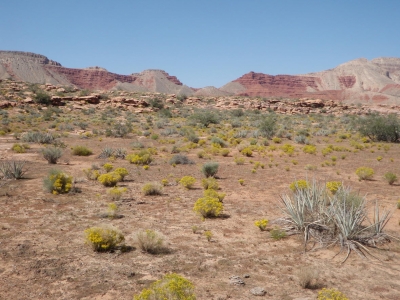
|
Deserts are dry for different reasons depending on where they are. Winds in sub-tropical deserts, such as the Sahara in northern Africa, prevent rain clouds from forming. Coastal deserts, like the Atacama in Chile, get no rain, just a little moisture from fog. Death Valley, in California, USA, is a rain shadow desert on mountainsides that face away from rain-filled winds. The Gobi, in Mongolia, is an interior desert; rain-bearing winds cannot reach so far inland. Polar deserts, such as the Arctic and Antarctic, are dry because the water is locked as ice. |
Areas that receive less than 25 centimeters (10 inches) of rain annually are called deserts. Deserts are dry with sparse vegetation. Landforms tend to have angular features because the lack of rain results in minimal chemical weathering, and flash floods create steep?walled scarps and gullies. There are few plants to protect the soil from the wind, so the soil is blown away to expose the rocky surface. Even in such a dry climate, most of the landforms are carved by the rare periods of heavy rainfall that result in flash floods, erosion, and sediment deposition.
Hot air rises at the equator, where the land receives the greatest amount of the sun’s radiation. Most of the world’s deserts are located near 30 degrees north latitude and 30 degrees south latitude, where the heated equatorial air begins to descend. The descending air is dense and begins to warm again, evaporating large amounts of water from the land surface. The resulting climate is very dry.
Other deserts are located in the rain shadows of mountain ranges. As moist air passes over a mountain range, it expands and cools, precipitating most of its moisture as it rises. As it sweeps down the other side of the mountain range, it warms and compresses, causing high evaporation rates and shedding little rain. Many of the deserts in the southwestern United States are the result of rain shadows.
Credit: Cliffs Notes
Picture Credit : Google




